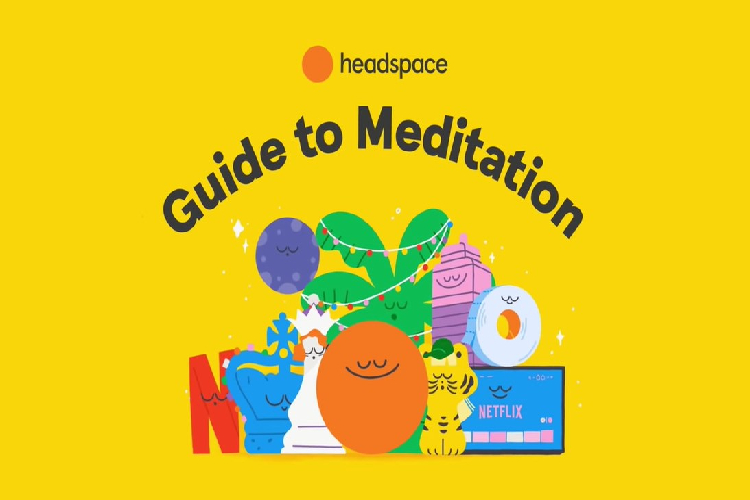
The Netflix Original Series Guide To Meditation is presented by Headspace and narrated by Andy Puddicome. photo courtesy of Netflix
Guide to Meditation is a short series on Netflix where the meditation company Headspace teaches the science behind meditation while helping the audience practice it.
Over the past few months, I have found myself seeking new ways to relax and care for the well-being of my mind and body. I have maintained my physical health through exercising on a daily basis, yet I have never had a good strategy to focus on mindfulness and relaxation. I have made attempts with different calming techniques such as yoga, deep breathing, and instrumental music, which are all fairly soothing; however, I have become deeply fascinated with the simplicity of meditation. Ever since I clicked on the show Guide To Meditation at the end of a stressful day, it has become a part of my daily routine.
The narrator, Andy Puddicome, is the founder of Headspace, an author, and a teacher. He is also a former Buddhist monk and the United Kingdom’s foremost mindfulness expert. Puddicome uses his experiences as a meditation teacher and those he had at the monastery to show the comparison of life with and without meditation, further embracing the impressive benefits of it. He often includes scientific experiments and trials done that show how people who practice meditation deal with stressful scenarios better and overall have an improved perspective on themselves and the world around them. Aside from these published results, Puddicome seems to enjoy using real-life examples to intrigue his audience, such as speaking about the students he has taught and their personal thoughts and experiences with the practice of mindfulness. These parts of each episode make me feel more at peace with my worries and fears, as I was given the understanding that there are people out there who relate to my challenging aspects of life.
The show currently has a total of eight episodes, all covering specific topics and meditation techniques. These topics range from letting go of negative emotions to resolving anger through compassion and acceptance. One of the reasons I decided to watch the show was because the animation looked incredibly soothing. At the beginning of each episode, Puddicome briefly explains the science behind the kind of meditation being discussed along with real-life examples. As he speaks, the graphics appear to connect with each other according to his script. They may simply appear as colorful shapes and figures, but there is a deeper meaning behind each display. For example, a spiked circular spot represents negative thoughts that overwhelm the mind. The structure of each episode is a basic overview of what will be covered, such as how to fall in love with life, how to be kind, how to deal with stress, and so forth, followed by a walkthrough helping the audience to achieve a state of mindfulness through a 7-10 minute practice of meditation. I have found these practices to be extremely helpful in relieving my body of all the tension that has wounded up throughout the day, encouraging me into a state of exhaustion and awareness. I admit to feeling quite mentally fulfilled, yet tired, after watching an episode.
Personally, I enjoy watching the show directly after school. This is since in the past I have overwhelmed myself by working on classwork for hours after school has ended, refusing to take any breaks to eat, sleep, or even drink water. I had a “get it done now” mindset, which evidently resulted in stress and an overworked body. So, after correcting my daily routine, I make sure to watch an episode of Guide To Meditation per day. Since each episode covers a different topic, once I completed the entire series I allowed myself to pick what meditation technique to practice based on how I feel in the moment. For example, the episode that discusses ways to deal with stress seems to be my top pick when anxiety and tension take over my body.
The reason why I have fallen in love with the practice of meditation is that it has made me realize the importance of mindfulness and becoming at peace with my body, emotions, traits, flaws, fears, and other personal qualities of life. Meditation has given me time to care for my brain in ways I never thought I could before. I have also come to notice how deep breathing calms my heart in times of stress and worry. I want to continue to include meditation in my daily life in order to steadily improve myself over time, as well as focus on the well-being of my mind and embrace the positive treatment of others. Headspace’s show has successfully drawn me in by giving me knowledge and meditation techniques that I surely need in this pandemic, yet I will continue to practice mindfulness once these tragic times have passed.